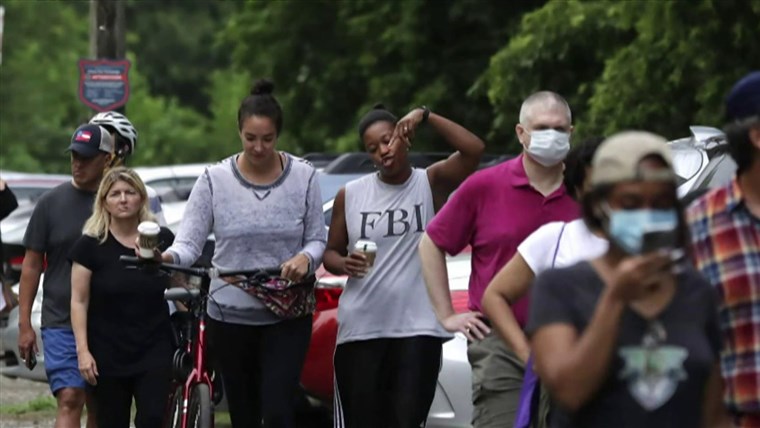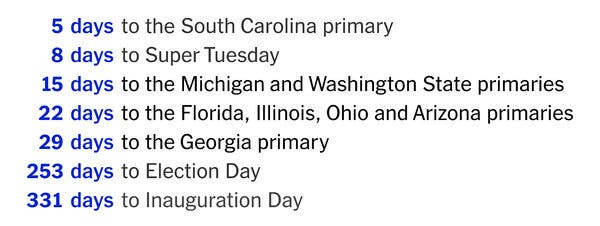New Yorker Sasha Aickin, 43, has no idea if his vote counted.
It took weeks for his absentee ballot to arrive — appearing in his mailbox just three days before the election on June 23. It came with two sets of instructions in very fine print. Neither set, Aickin said, told him to sign the envelope or had complete information about his options for returning the ballot. He saw the city’s Board of Elections account tweet confirming that he could drop it off at his local polling location.
Come Election Day, however, the Brooklyn poll worker to whom he handed his ballot seemed unsure.
“I walked away with very little confidence that my vote was going to be counted,” Aickin said in a phone interview. “And I don’t know if I’m ever going to find out if my vote was counted, because I handed it to someone who didn’t seem to know what to do with it.”
New York is one of the more than a dozen states that drastically expanded the ability of eligible voters to cast a ballot by mail in this year’s primary elections due to the coronavirus public health emergency.
But that expansion — necessary, government and public health officials have argued, in order to reduce the spread of COVID-19 — has strained systems accustomed to handling only thousands of mail-in or absentee ballots at a time, causing weeks of delays in counting that have experts worried that Election Day in November could drag into Election Week.
The flood of additional mail ballots in the primaries has also revealed another problem that could have enormous consequences for November: a sharp increase in ballot rejections. Ballots can be tossed for voter errors like not signing in all the right places, having a signature that doesn’t exactly match one’s voter registration signature, or reaching election officials too late.
In California alone, a state that allowed all eligible voters to cast a ballot by mail prior to the pandemic and is accustomed to processing millions of those ballots, more than 102,000 ballots were rejected in its March 3 primary, up from 69,000 in the state’s 2016 primary.
That number includes some mail ballots that were surrendered by voters who chose to vote in person instead, but the majority of them — some 70,000 ballots — simply arrived too late, according to data first reported by The Associated Press and provided to NBC News by the California secretary of state’s office. Nearly 13,000 voters forgot to sign the ballot, while more than 14,000 signatures were declared a mismatch by officials.
In Wisconsin’s April 7 primary, the rejection rate was 1.8 percent, with more than 20,000 mail ballots rejected, according to state data. That’s 12 times the number of mail ballots rejected in the 2016 presidential primary.Another 79,000 late ballots were only counted in this year’s primary after a court order demanded the state count ballots postmarked on time but delayed by the mail.
“I’m quite worried that there’s going to be many voters disenfranchised for inadvertent noncompliance with absentee ballot rules,” said Rick Hasen, a professor and an election law expert at the University of California, Irvine.
That’s because many voters have never voted by mail, and “in part because some states don’t have a lot of experience processing these ballots,” he said.
Studies also show that minority voters are more likely to have their ballots rejected than white voters.
In Florida’s March 17 primary, election officials tossed 18,500 ballots — roughly 1.3 percent of all those cast — according to a recent analysis. Ohio rejected more than 20,000 ballots — 1.2 percent of the mail ballots cast — in its April 28 primary, according to state election results.
Kentucky’s State Board of Elections hasn’t finished compiling data from its June 23 primary, but in Jefferson County, more than 8,000 ballots, or approximately 4.4 percent of the county’s ballots, were tossed — more than half because the voter had forgotten to sign the ballot or its envelope. In 2018, the state rejected 8 percent of absentee ballots — just 294 ballots, according to local reports.
The office of Georgia’s secretary of state said that counties aren’t asked to report absentee ballot rejection rates to the state, but in 2018 they rejected 3 percent of absentee ballots. The state saw more than a million people vote by mail in its June 9 primary.
A late ballot is the No. 1 reason absentee ballots are rejected, according to the data published in the Election Administration and Voting Survey (EAVS) from 2018 and 2016. Mismatched signatures or missing signatures follow as the second and third most common reasons. A rejected ballot doesn’t mean a voter is ineligible to cast a ballot — though it could — and experts say that voter error often appears to be the cause, such as in the case of forgetting to sign one of multiple signature lines on the ballot or not sealing an interior envelope.
Sometimes it’s not even voter error: a missing or unreadable postmark can get a ballot tossed, as can mail delays.
Advocates and experts say that seemingly low ballot rejection rates will have big impacts and millions of ballots could be rejected in the general election. States with large and healthy mail voting operations typically have rejection rates below 1 percent, but the average state rejection rate for absentee voting in 2018 was 1.4 percent.
“This year, the rejection rates are going to be higher,” said Wendy Weiser, vice president of the Democracy Program at the Brennan Center for Justice at the New York University School of Law. An electorate inexperienced with mail voting will be more error-prone, and election workers and systems aren’t used to processing as many mail ballots.
“Take a look at New York — New York always has high rejection rates, it has been alarming in this cycle,” she said, pointing to a NY1 report indicating extremely high rejection rates in certain New York City districts.
Ballot counting is still ongoing in the city, but New York state had the highest rate of absentee ballot rejection of any state in the United States in 2018, according to EAVS data. Nearly 14 percent of the returned absentee ballots, more than 34,000, were tossed by election officials in 2018.
The League of Women Voters filed a lawsuit in July alleging that New York’s processes toss too many eligible ballots, arguing that it was unconstitutional not to give voters a chance to fix ballot errors. A plaintiff in the suit is a woman with an essential tremor, a neurological condition that keeps her from always maintaining a consistent signature.
Aickin, the New York voter worried about the status of his ballot, is a former chief technology officer of Redfin, a real estate firm, and lived in San Francisco for 22 years. He said that in his experience, voting by mail in California was simple and user-friendly.
But when NBC News asked both the city and the independent agency that oversees New York City elections whether or not Aickin’s ballot had been counted, the agency didn’t respond, and the city said that the agency wouldn’t tell them. Aickin hopes to vote by mail again in November’s general election in New York, but worries the system in place isn’t up to the task.
“I don’t know what I could do better to make sure my vote counts,” he said.



